 "QUANTUM SHOT" #483 "QUANTUM SHOT" #483Link -- Article by M. Christian of "Meine Kleine Fabrik" and Avi Abrams A Loudly Lurid Universe of Sci-Fi Pulp Illustration The polished humanism of Star Trek; the grungy mythology of Star Wars; the uncomplicated flesh versus machine of Battlestar Galactica, the Terminator flicks, and the Matrix movies –- the future is all around us. Bitter, sweet, dark, light: You just have to pick your flavor for what you want tomorrow to be.  Norman Saunders for "Super Science Stories", March 1950 But step back just a few decades and recall how looking at tomorrow was solely for newsstands and tawdry bookstores, which presented a loudly lurid universe of glistening glass tubes, gleaming chrome starships, and frantically faced diabolical scientists of the very-mad and very-bad variety. 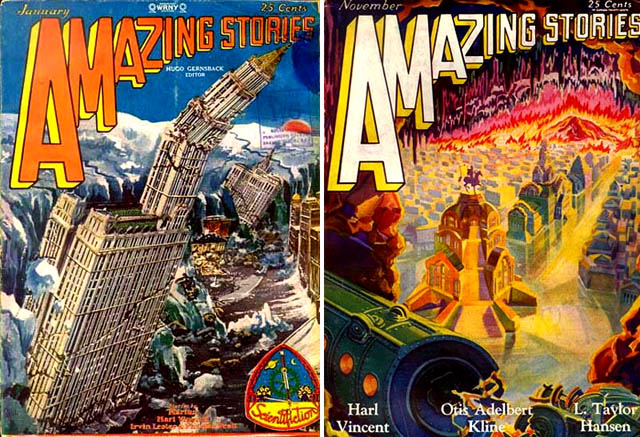 Amazing Stories, Weird Tales, Wonder Stories, Astounding Science Fiction, Planet Stories, and the rest of their pulpy kin were secret sins, magazines smuggled home to be read under the covers by the dying batteries of a Boy Scout flashlight.  At the time, the artists working for the pulps weren’t considered anything but cheap creatives providing cheap entertainment for cheap minds. But now we know what they were: visions of wonder, amazing vistas of the imagination, daring dreams of possibility, magnificent views of What Could Be -- but most of all we look back at what they did and recognize it for being truly magnificent art. 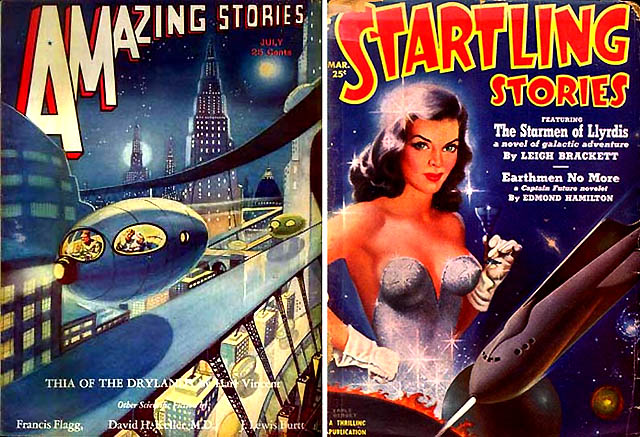 Unfortunately there isn’t enough time or space to touch on all of the artists who worked for the pulps that were printed between (roughly) 1920 (something) and 1950 (something), but here’s a quick guide to some of my own personal favorites, the artists who created a world of tomorrow when today was the only thing people could see. 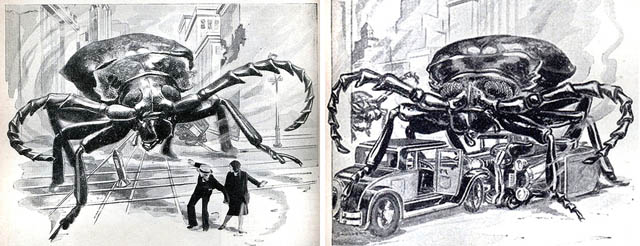 Frank R. Paul - a bravery of scope You have no choice but to be amazed by Frank R. Paul’s Amazing Stories covers. While the world was coughing and spitting behind the wooden wheels of Model T Fords or barely getting off the ground in biplanes, Paul created wonderful scientific dreams for a wonderful array of magazines.  His visions might have been built from the stuff of those early days –- tubes, wires, electrodes, sprawling cities –- but Paul had a bravery of scope: steamships flew through the sky, tidal waves cracked skyscrapers in half, dozens of alien vistas sparked the imagination, and scientists peered into the vastness of space with telescopes the size of mountains. But whatever the size of his scope, Paul also filled his images with incredible detail, giving each one a reality that made his work like a functional blueprint for the future and not just an enticement to drop a nickel for an afternoon’s amusement. 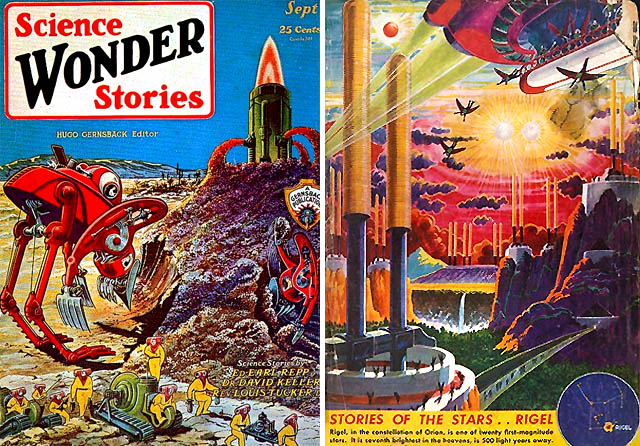 (art copyright Frank R. Paul) See the huge gallery of his art here. Virgil Finlay - beauty, subtlety, and sensuality Although he’s also legendary for his covers, praise for Virgil Finlay has mostly been –- rightfully -- given out for his black and white interior work. Sure he also had scope, drama, crazy dreams, and pulp outrageousness... but to see a Finlay illustration is to be hushed into silence by its beauty, subtlety, and sensuality.  It's easy to picture his images from Weird Tales hanging in the great galleries of the world. The fact that much of his early work was for neglected and belittled pulps like Weird Tales is nothing short of infuriating.  (art copyright Virgil Finlay) Hannes Bok - a playful madness Hannes Bok has to be on this stage of artistic magnificence as well. Like Finlay, his style is refined and elegant, so much more than the pulps he worked for. But he also brought a playful madness to his illustrations: a twisted kind of beauty to his figures and environments. Looking at a Bok cover, you didn’t know whether what you were looking at was a dream or a nightmare, but you always felt that it was rich, glowing with passion, perfectly composed, and absolutely brilliant. 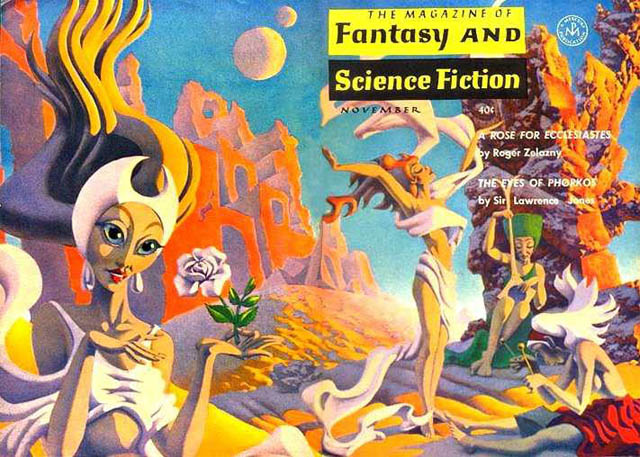 (art copyright Hannes Bok) Wally Wood - a winking sense of whimsy Another inspired illustrator, one that jumped from the pulps to pretty much every kind of illustration, is was the legendary Wally Wood. It would take a book, hardly a short article, to just begin to touch on Wally’s scope: Weird Science comics, romance comics, Tales From The Crypt, trading cards, Mad Magazine and even some hilarious smut, including the legendary Disney orgy poster. Wood wasn’t just prolific or insanely flexible: whatever he did, and he did a lot, he brought with him a precise touch, a winking sense of whimsy, but also a carefully balanced sense of drama. You always knew you were looking at something Wood had done, and you were always amazed by it.    (art copyright Wally Wood) Here is a nice article about Wally Wood - link. Frank Kelly Freas - always compelling When you mention Frank Kelly Freas many people immediately think of his iconic cover for Astounding Science Fiction, the one that Freas also did for Queen’s album. 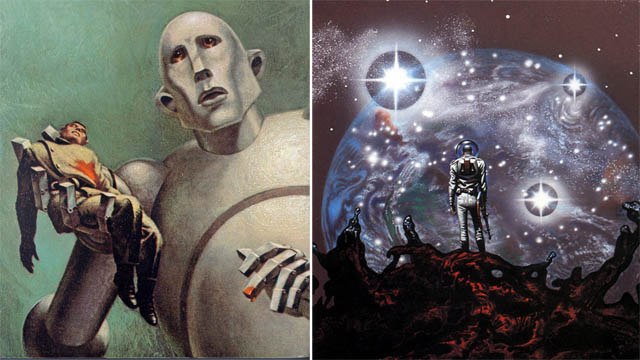 But when I think of Freas I prefer to think of the delightfully winking cover he did, also for Astounding, for Fredric Brown’s "Martians, Go Home". That, for me, is Freas: there is perfect technique, marvelous color, ideal drama and composition, but there’s also his marvelous sense of whimsy, a kind of bright and sparkling joy you can see in whatever Freas did, and what makes his work always compelling. 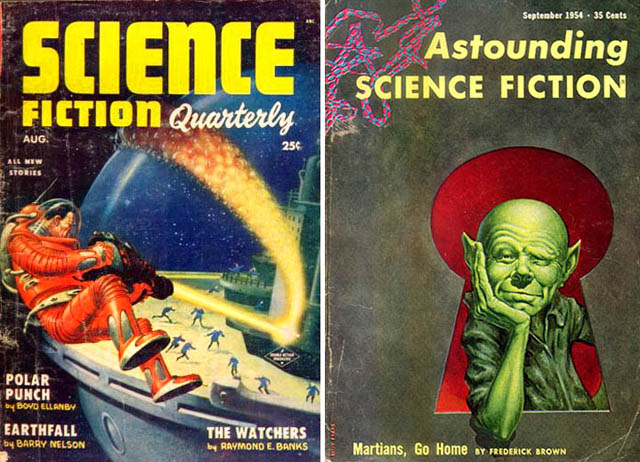 (art copyright Frank Kelly Freas) Chesley Bonestell - the father of modern space illustration There are too many fantastic artists who worked in the pulps to touch on them all on this little space, but I can’t go without at least mentioning Chesley Bonestell. Even though you can’t really call Bonestell a ‘pulp’ artist, he deserves a bit of space for what he did for … well, ‘space.’ Considered by many to be the father of modern space illustration, Bonestell was the man who realized the scientific projections of Willey Ley and Wernher von Braun and the motion picture dreams of George Pal. His paintings –- elegant, quiet, and magnificent -- were, for many people, not what the future could be, but what the future would be: a world of rockets and starships and men looking back at the earth from the distant moon. 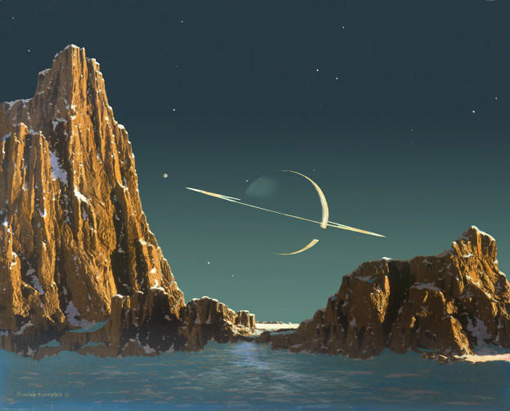 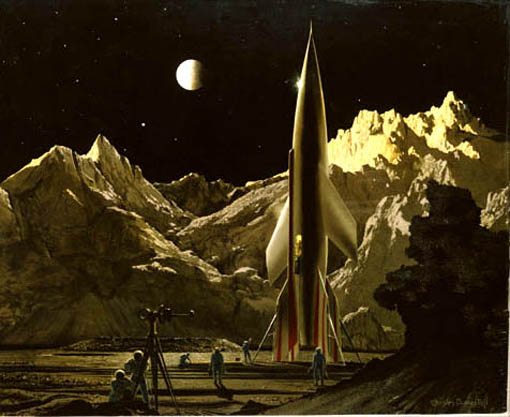 (art copyright Chesley Bonestell) Can't get enough of the glorious pulp art... Of course, there were plenty of "damsel in distress" illustrations in the vintage pulps - but these have a certain charm, too: 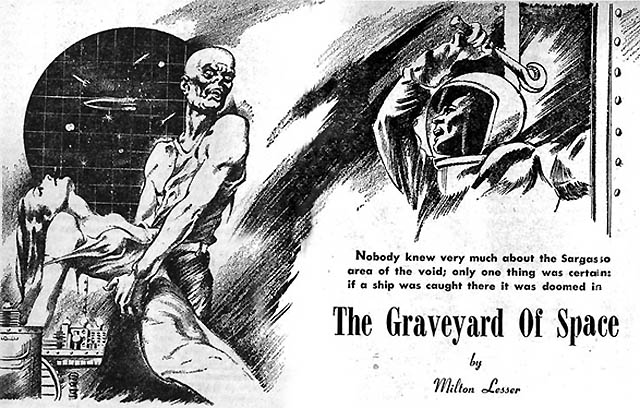 Check out the cover art on the right: this time it's the hero who is in trouble, being (saved?) by futuristic ladies: 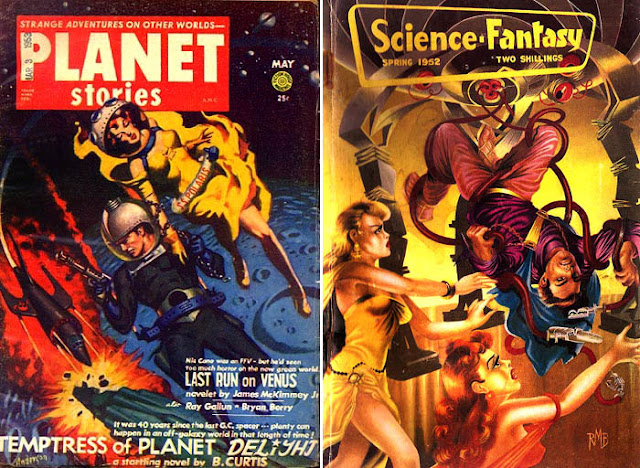 International pulp art was quite spectacular, too. Covers from Italian magazine "Urania" - 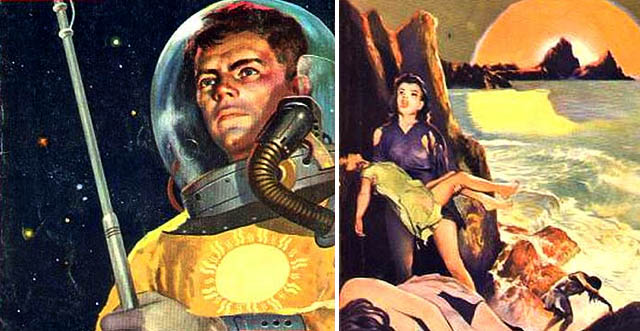 Glamorous ladies in dire futuristic situations: 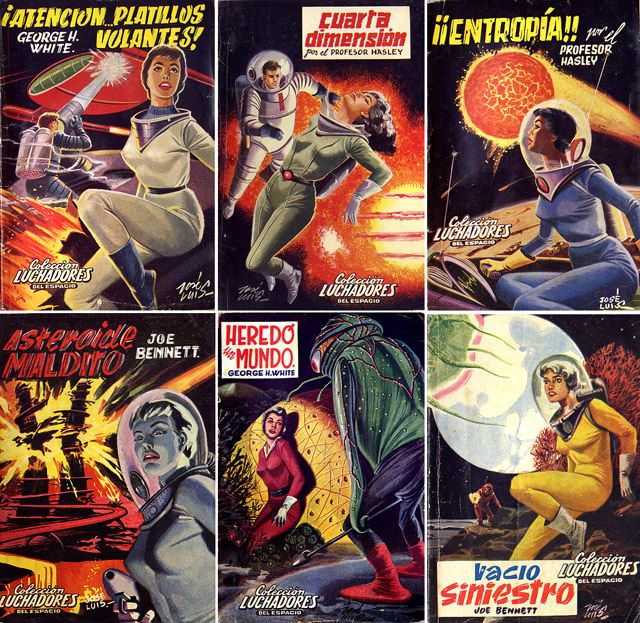 French sci-fi paperbacks from the 1950s:  That’s all for now but if there’s a lesson to be learned it’s that even though we might live in a world right next door to the future, there’s still a lot the past can teach us. Like, that real treasures and fantastic art can be found in places we might stupidly dismiss as simple, cheap, or pulpish.  Modern example of pulp space adventure art - by Donald Newton Images via, and courtesy of, the Collector's Showcase. Also Read: Babes in Space, Ladies and Robots Permanent Link...  ...+Facebook ...+Facebook Category: Art,Vintage, Futurism |
Grand Old Times... In The Future (Overview of Pulp Art)
Subscribe to:
Post Comments (Atom)
Check out this stream
Blog Archive
-
▼
2008
(968)
-
▼
October
(53)
- Hairy Fractals
- Archive: October 2008
- Wicked Wearable Sculptures
- Leprechaun Gallery
- Candidates Dancing Frenzy
- Caves: The World Beneath the World
- Link Latte 84
- Creative Ads, Issue 11
- Teddy Bear Coloring Pages
- Balloon Coloring Pages
- The Solar Furnace
- Ultra Rigs of the World
- Film! Film! Film!
- SF Site Update
- Funny Fairy Coloring Pages
- Printable Chinese Dragon
- Dolls and Toys that Creep us Out
- Link Latte 83
- Rhino Coloring Pages
- Funny Giraffe Coloring Pages
- Castles That Will Inspire and Haunt You
- Trilobite Beetle of Laos
- Spongebob Coloring Pages
- Tinkerbell Coloring Pages
- DRB Exclusive: Steampunk Art Store Opens!
- Earth Coloring Pages
- Big in Japan: Dschinghis Khan!
- School Suplies Coloring Pages
- Schoolbus Coloring Pages
- Platypus and Echidna Babies
- Funny Aliens Coloring Pages
- Link Latte 82
- Strange Knits and Yarn Monsters
- Sad Fairy Coloring Page
- The Show Must Go On!
- Project "Orion": Powered by an Atomic Bomb Machine...
- Pokemon Coloring Pages
- Bunny and Friends Coloring Pages
- Work It Out! - Urban Exercise
- Weird Inventions by Guys, Part 10
- Link Latte 81
- Grand Old Times... In The Future (Overview of Pulp...
- Working LEGO V8 Engine
- Beauty in Decay: Photography of Urban Exploration
- Beautiful Daisy Coloring Pages
- Playing Elephant Coloring Pages
- Ice Skating Coloring Pages
- Mickey Coloring Pages
- I Can Fly! (and so much more)
- Lebanon: Switzerland of the Middle East
- Archive: September 2008
- Fresh Fruit Coloring Pages
- Horse Coloring Pages
-
▼
October
(53)









0 comments:
Post a Comment